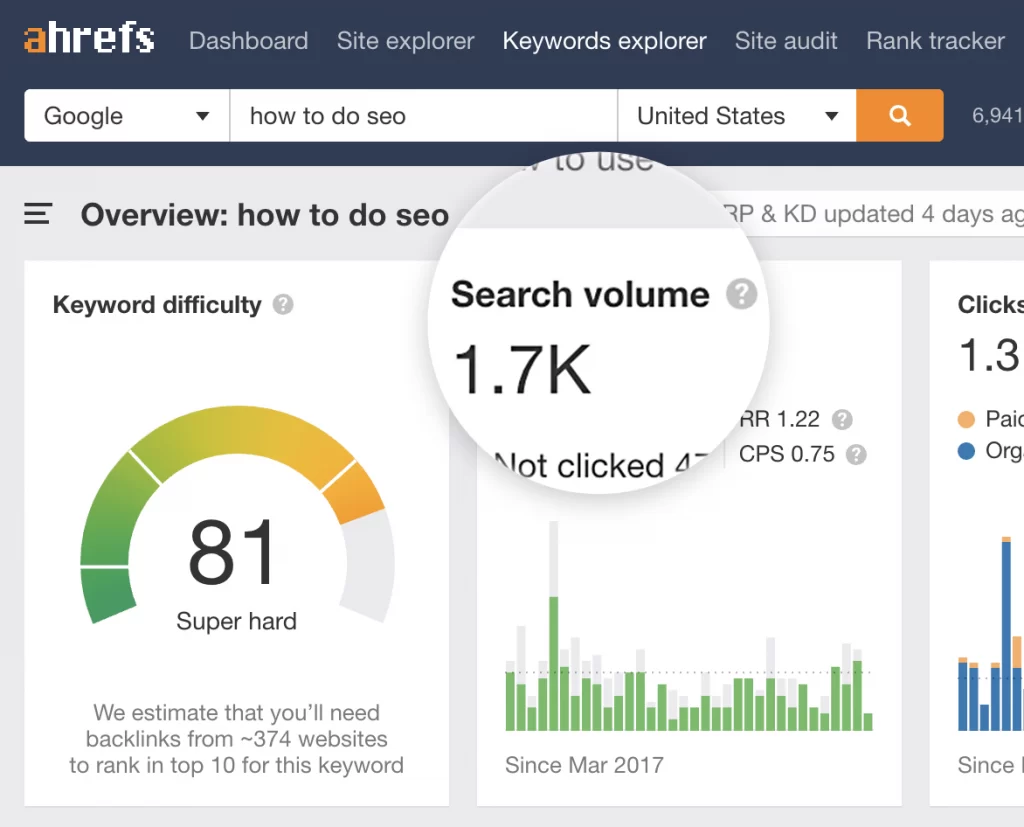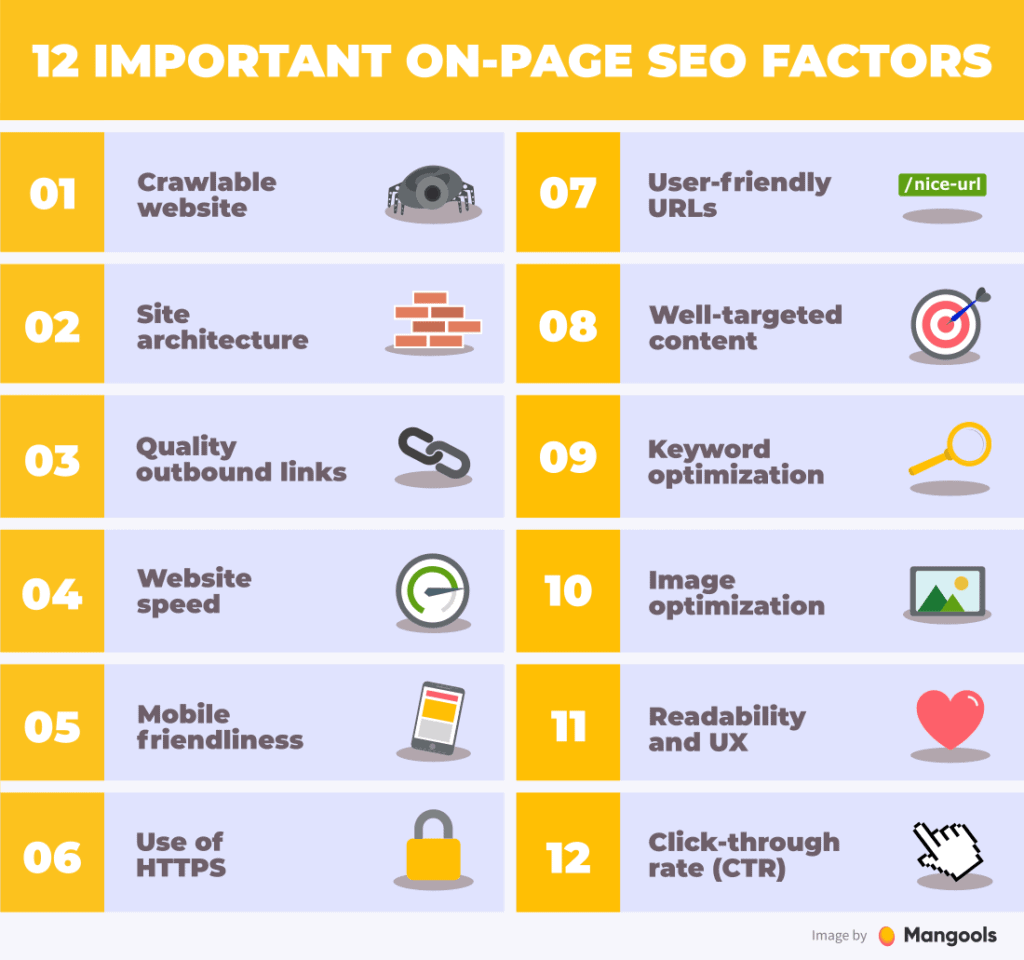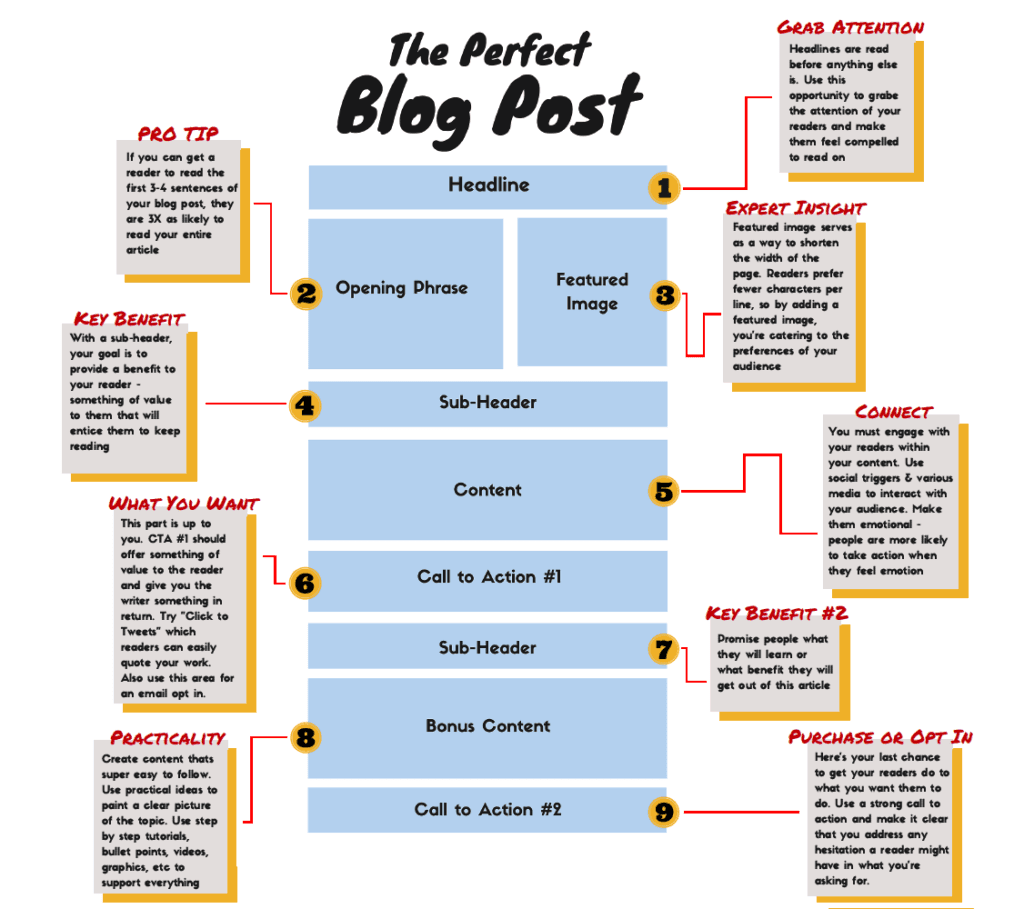How to Optimise Blog Posts for SEO
Search engine optimisation (SEO) is crucial for driving traffic to your blog. If you want your posts to rank higher in search engines like Google, you need to optimise them.
Optimising your blogs for SEO might sound intimidating. But by following some best practices, you can dramatically boost your search traffic. This comprehensive guide will teach you how to optimise blog posts for SEO.
Table of Contents
Know Your Audience
The first step to optimise blog posts for SEO is understanding your target audience.
- Who are you creating content for?
- What do they care about?
- What questions would they ask to find your content?
You need to get into the minds of your readers. Identify the keywords and phrases they'd use to find your posts.
Optimising for specific keywords tailored to your audience is vital for ranking well in search engines. We'll get into keyword research in more depth soon.
Choose the Right Keywords

Choosing the right keywords is the foundation of on-page SEO. You want keywords with sufficient search volume and low difficulty to rank for. Here's how to find the best blog post keywords:
Use Keyword Research Tools
Keyword research tools like Ahrefs, SEMrush and Google Keyword Planner show search volume and competition data. Look for keywords with:
- High search volumes
- Low competition (low keyword difficulty scores)
Phrase-match keywords usually have better conversion rates than single words. For example, “content writing tips” over just “writing tips”.
Analyse Competitors
See what keywords your competitors rank for by checking their blog posts and looking at their organic search traffic sources in SimilarWeb or SEMrush. Target some exact keywords while finding related long-tail versions with lower competition.
Consider Searcher Intent
Search for keywords yourself and analyse the types of results that come up. This shows your searcher intent. Optimise your posts for informational, transactional or navigational intent.
Informational queries want to learn about something, like “how to start a blog”. Transactional queries like “best blogging tools” wish to complete an action. Navigational queries look for a specific site or webpage.
Use Keyword Tracking
Once your blog post is live, use Google Search Console and keyword tracking software to see which terms drive traffic over time. Expand on keywords, bringing in visitors.
Optimise Your Title Tags
Your SEO title tag is the primary signal for search ranking and click-through rate. Follow these best practices:
- Include your target keyword – This tells both users and Google what the page is about
- 50-60 characters max – Longer usually gets cut off in SERPs
- Compelling and descriptive – Grabs attention with curiosity and specifics
- Unique for each page – Avoid duplicate or near-duplicate titles
Your blog post title is displayed in the search engine results page (SERP) listing and is critical for click-through rates. It must be compelling and optimised.
Include Your Primary Keyword
Work your single best primary keyword or phrase to start your title tag. Having it appear up front helps catch the searcher's attention faster.
For example:
✋ Bad title: Blogging Tips
👍 Good title: 17 Proven Blogging Tips To Triple Your Traffic
The compelling title stands out more in search and encourages clicks.
Keep Titles Concise
Title tags should be less than 70 characters to prevent getting cut off in SERPs.
Aim for 50-60 characters, including spaces, by keeping your title concise.
Create a Compelling Title Copy
You also want your titles to generate interest and compel searchers to click through.
Use compelling adjective phrases like “ultimate guide” or numbers such as “10 tips” to make your title content more enticing.
Write Strategic Meta Descriptions

Meta descriptions summarise the essence of your content in 155-160 characters. They appear as the description text underneath your title tag in SERPs.
The search engine mainly uses them to provide searchers more context. But they also influence click-through rates.
Follow these best practices for optimising meta description tags:
- Incorporate primary and secondary keywords – Synonym variations also help
- Hook reader interest – Pose questions, use emotional keywords
- Provide clear value propositions – Demonstrate how your content solves search queries
- Use a compelling call-to-action – Encourage clicking your listing over others
Example Meta Description
Do you need help to get your blog posts to rank high in search engines? Learn ten powerful tips for optimising your content for higher SEO visibility.
This example meta description promises to solve the searcher's problem and provides vital details about the value they'll receive.
Optimise Your Headers
Header tags (H1, H2, H3 tags) are HTML elements that define structure and hierarchy in your blog post content.
They are vital for SEO because search engines analyse header text to understand the focus of content on the page.
Follow these header optimisation best practices:
H1 Tag
Your H1 should match your blog title, reinforcing the primary focus keyword for search engines.
H2 Headers
Use strategically placed H2 headers around secondary keywords and long tail phrases you are targeting.
For example:
Why is Meta Description Optimisation Important?
H3 & H4 Headers
Break up lengthy chunks of text with H3/H4 headers around tertiary keywords and subtopics.
Create Scannable Paragraphs
With long blocks of text, readers will simply skim and leave. Make it easy to scan your content with these paragraph tips:
- Keep paragraphs short – 3-5 sentences maximum
- Use subheadings – Break up sections into logical pieces
- Bold key terms – Draw attention to important keywords
- Include numbers and stats – Numeric lists stand out for scannability
- Use formatting – Bullet points, tables, and images aid skimming
Optimising paragraph structure ensures readers absorb your critical information.
Boost On-Page SEO Signals

Beyond copywriting, ensure your blog platform is optimised for on-page SEO best practices:
- Mobile-friendly responsive design – Over 60% of searches come from mobile devices
- Fast page speed – Faster sites rank better; keep it under 2 seconds
- Secure HTTPS URLs – Switch to SSL certificate to encrypt connections
- Quality internal links – Link to related posts to pass authority
- Semantic HTML tags – Use tags like <header>, <nav>, <main> appropriately
- Alt image attributes – Describe images for accessibility and SEO
- Schema markup – Can improve rich snippet appearance in SERPs
Configuring these technical elements helps search bots crawl and index your content efficiently.
Optimise Your Image File Names
When you embed images in your blog posts, naming the image files appropriately can also boost SEO value.
- Incorporate primary and secondary keywords
- Separate words with hyphens
- Use descriptive names summarising the image
For example, “search-engine-optimisation-blog-header.png.”
This provides more context to search engines about the image relevance to article topics.
Use Keyword Density Best Practices
Keyword density refers to the percentage of page words matching your target keywords. Density indicates relevance.
Aim for these keyword density benchmarks:
- Primary keywords – 1-3% density
- Secondary keywords – 2-4% density
- Overall – Less than 10% density
Too much keyword stuffing will trigger a search engine penalty. Strive for the natural incorporation of keywords within high-quality content. Also, don't hesitate to do in-depth internal link text analysis to ensure that your website's navigation structure effectively incorporates relevant keywords.
Feature Related Resources
Increase average time on page and reduce bounce rates by linking to related resources:
- Other relevant blog posts from your site
- Infographics that visually represent data from your post
- Videos expanding on the topic
- External insight reports or product guides
Feature links to resources in a section like “For More Information See:”. This content upgrade keeps visitors engaged while showcasing your expertise.
Craft Compelling Content

High-quality content is what delivers the best SEO results in a long time.
Make your blog posts stand out by sticking to these content best practices:
Be Unique
- Provide original analysis on your topic that readers won’t find elsewhere. Don’t simply rehash what others have already said on the subject.
Go In-Depth
- Thoroughly cover every aspect of your topic with actionable tips and detailed explanations. Become the definitive guide.
Entertain Readers
- Blend facts with engaging storytelling. Use humour, cultural references, and intriguing questions to suck readers in.
Place Images Strategically
- Relevant photos break up walls of text while providing additional context. But don’t go overboard.
Promote New Content
Getting early traction with a blog post will boost its rankings. Promote new content by:
- 📝 Email newsletter: Alert your subscriber list
- 🐘 Social media posts: Share snippets and ask questions
- 👥 Facebook and LinkedIn groups: Post your new guide to relevant communities
- 🏷️ Quora tagging: Answer related questions and link back to your content
Promotional activities like this signal interest to Google while acquiring direct visitors. Leverage them in the first 1-2 weeks after publishing new posts.
Track Keyword Rankings
Analyse how your newly published and optimised content ranks for target keywords over time.
This lets you see what SEO strategies are working well vs where there are still opportunities for improvement.
Use Rank Tracking Software
Services like SEMRush, Ahrefs, and Moz automatically index keyword rankings daily across search engines like Google and Bing.
Check Manually
You can also manually check keyword rankings by searching target phrases in Google and identifying the position of your blog post URL in the results.
Consistently tracking rankings reveals SEO impact and progress over time.
Optimise Blog Posts Based on Results

Treat SEO as an ongoing process. Use rank-tracking insights to fuel further optimisation.
Improve Low Ranking Content
If you notice blog posts that aren’t gaining expected visibility, rework sections that may be under-optimised, like metadata or content.
Double Down on Top Content
Find your best ranking pages and identify what SEO elements make them successful to emulate across other content.
Continue monitoring and evolving your posts for higher rankings. SEO is all about incremental progress through perpetual optimisation.
Track Performance Over Time
Monitor your blog posts in Google Analytics to see how they perform, then use that to inform future content.
Analyse Site Traffic Sources
See how much traffic comes from organic search vs other channels and which queries bring visitors. This shows you which subjects and keywords to target more.
Check Google Search Console Data
Connect Search Console to see queries your site ranks for and which pages get impressions/clicks for them. Identify your ranking blog posts.
Review Metrics Like Bounce Rate
If pages have high bounce rates, visitors likely aren’t finding what they want. Improve those posts or replace them with better-performing content over time.
Continuously tracking performance data for your blog content gives you insights to create even more search-friendly posts going forward.
Conclusion
I hope this comprehensive guide gives you a methodology for optimising your future blog posts for increased visibility and search traffic.
While SEO best practices may evolve, foundational principles like keyword targeting, compelling content, linking influencer sites to your URLs, and rank-tracking analysis will continue fueling organic growth for years.
Stick to the disciplines outlined here for maximising the SEO value delivered from every piece of content you produce. Over time, you'll see significant traffic and conversions flowing from search engines as you climb rankings for valuable keyword targets.
Get out there, craft some phenomenal content, execute core metadata and structural optimisation, promote it like crazy, and let your search analytics dashboards light up with surging traffic as you dominate SERPs!
Frequently Asked Questions
How often should you optimise existing blog content?
Revisit old blog posts every quarter and refresh elements like title tags, meta descriptions, image names, and broken links. Rework content sections around new secondary keyword opportunities.
What is the optimal blog post length?
Blog posts between 2,000 – 3,500 words generally perform best for SEO. This provides enough depth to cover topics while thoroughly retaining the reader's attention.
How vital are inbound links?
Inbound links remain among the highest-weighted signals for search ranking algorithms. Getting quality sites to link to your content with contextual anchor text boosts authority.
Should you use subheadings in blog posts?
Strategic subheadings formatted with H2/H3 header tags help segment blog content and optimise topic relevance around secondary keywords. Use them liberally.
What multimedia helps SEO best?
Embedding contextual images in posts boosts engagement. Infographics also visually represent critical information. YouTube videos expand your content footprint.
